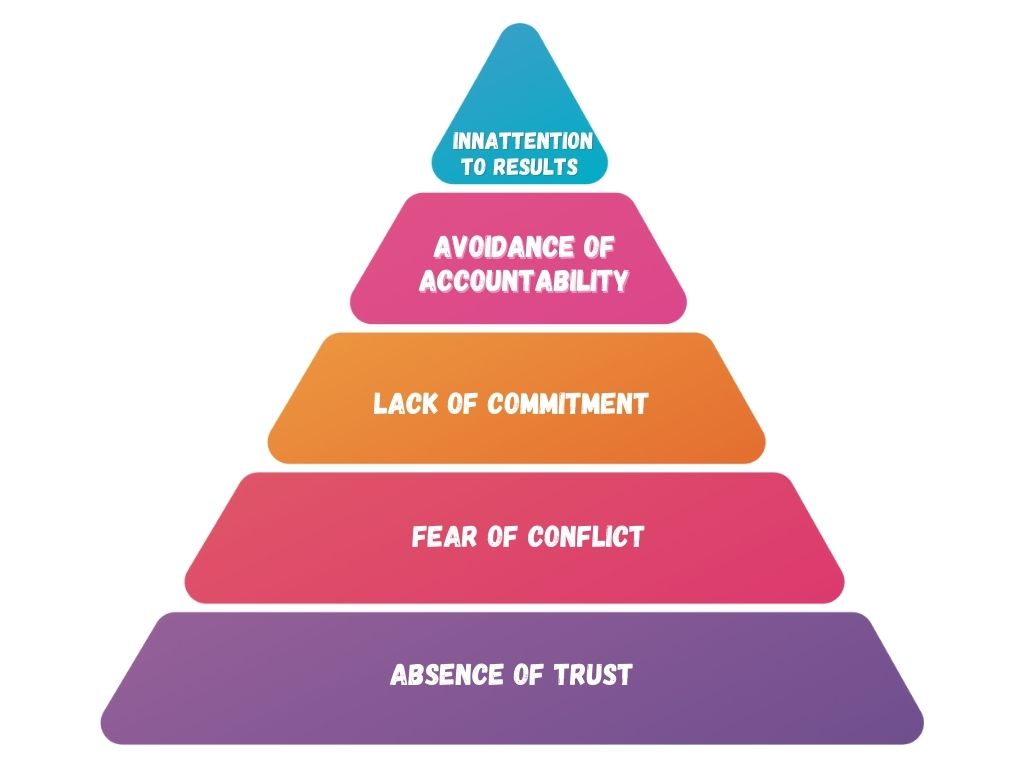dysfunctionalities of the team
if you, as a leader, can facilitate change to these dysfunctions, you can have an effective team.
As difficult as it is to build a cohesive team, it is not complicated. In fact, keeping it simple is critical, no matter the size and design of the organization. The five dysfunctions listed here is what keeps your team from performing at its best. If you, as a leader, can facilitate change to these dysfunctions, you can have an effective team.
- Patrick Lencioni states that dysfunctional teams happen everywhere, two truths, genuine teamwork is elusive.
- Organizations fail to achieve teamwork because they unknowingly fall pray to the 5 natural pitfalls
The natural pitfalls in a corporation have many different reasons. At the school level, this is more manageable, or it should be. It depends on how the TEAMS are organized. If the Teams are self-organized, we could think they are friends; not many problems may arise and the very beginning. If the Teams are organized by random, then we may need to keep an eye.
LEGO® is a beautiful tool to explore all these concepts with the Teams and establish a list of actions to put in place.
The five dysfunctions are:
absence of trust
•The first dysfunction • Unwillingness to be vulnerable with the group • Team members who are not genuinely open with one another of mistakes/weaknesses • Conceal their weaknesses and mistakes • Hesitate to ask for help or provide constructive feedback • Jump to conclusions about intentions/aptitudes of others • Fails to recognize and tap into one another’s talents • Holds grudges • Dread Meetings and find reasons to avoid time together.
fear of conflict
• When there is not trust… • A tone is set for members to not speak openly about issues • Lack of security to discuss in unfiltered/passionate debate • Input becomes guarded • Have boring meetings • Create an environment where back-channel politics & personal attacks thrive • Fail to tap into all the opinions and perspectives.
lack of commitment
• Without healthy conflict, members voice is not heard • Members need to feel their input matters • Creates ambiguity among the team • Watches windows of opportunity close due to excessive analysis & delay • Breeds lack of confidence and fear of failure • Revisits discussion and decisions, again and again, • Encourages second-guessing among team members.
avoidance of accountability
• When there is not trust… • A tone is set for members to not speak openly about issues • Lack of security to discuss in unfiltered/passionate debate • Input becomes guarded • Have boring meetings • Create an environment where back-channel politics & personal attacks thrive • Fail to tap into all the opinions and perspectives.
inattention to results
• If leaders don’t care, then why should we? • I don’t have to worry about it because no one will do anything about it! • Individual needs before the team • Stagnate/fails to grow • Rarely defeats competitors
• Encourages team members to focus on their learning and individual goals • Is easily distracted.

